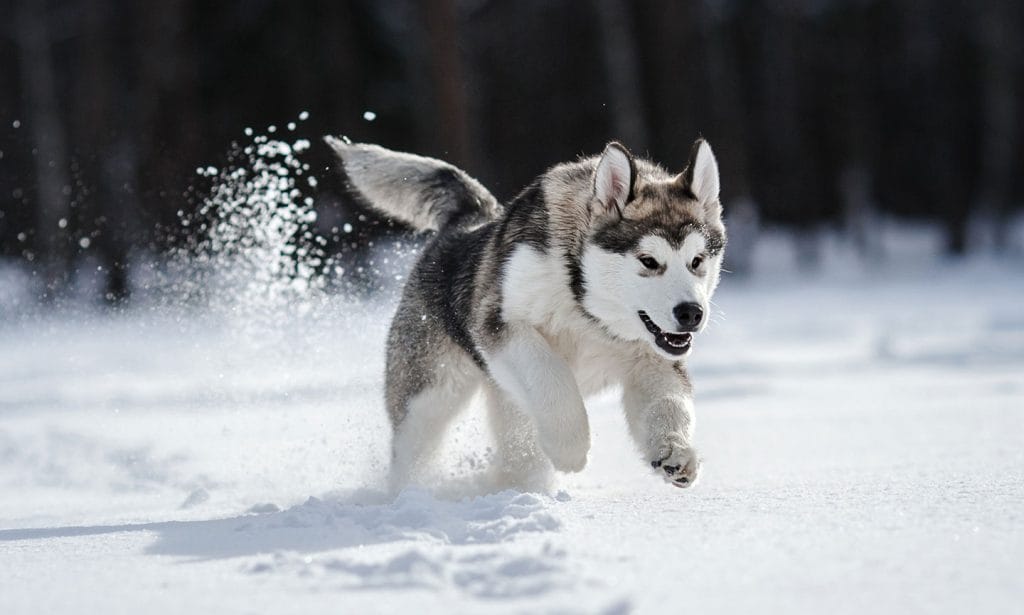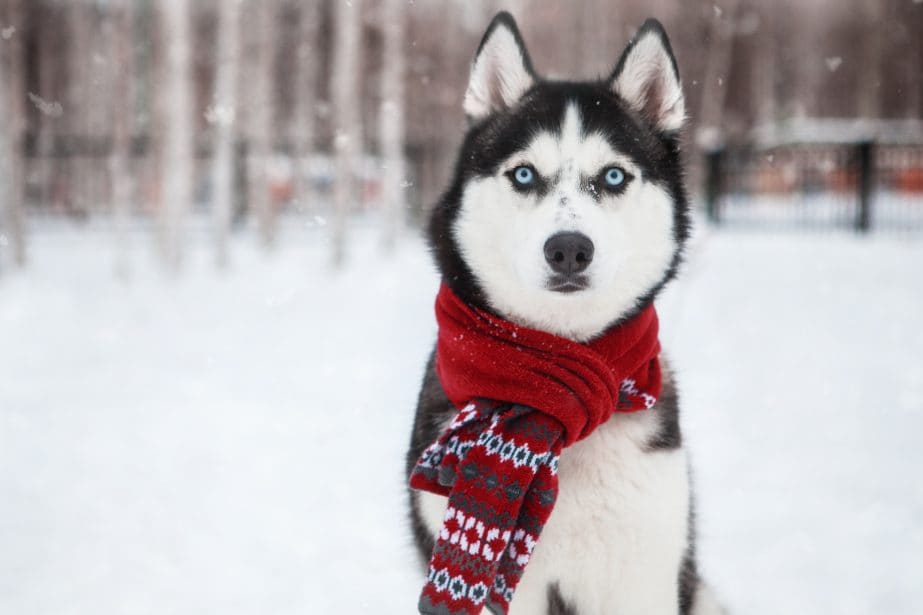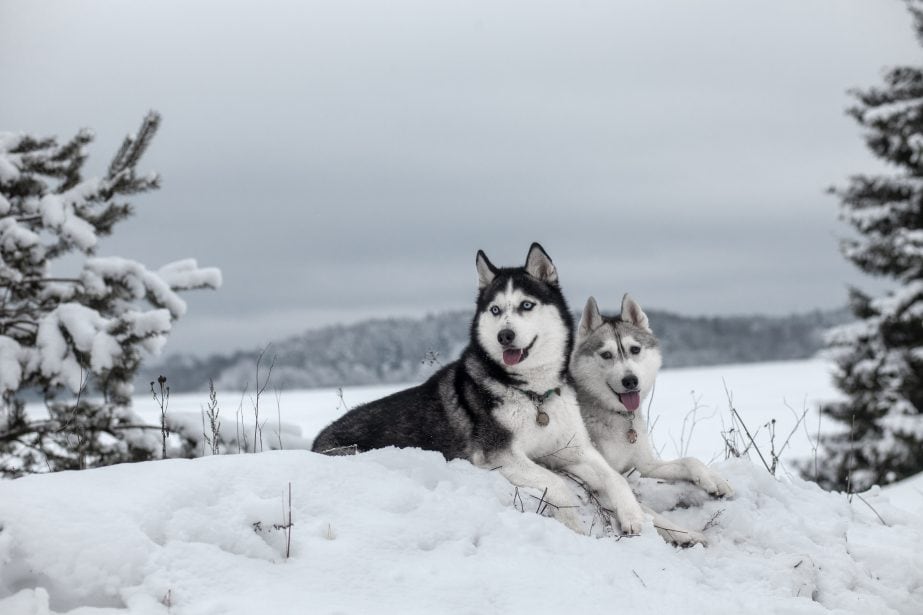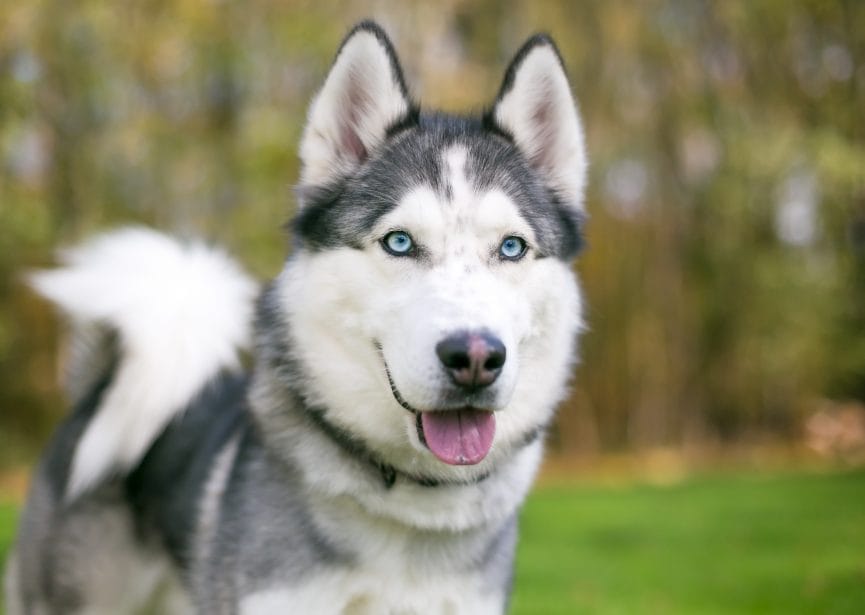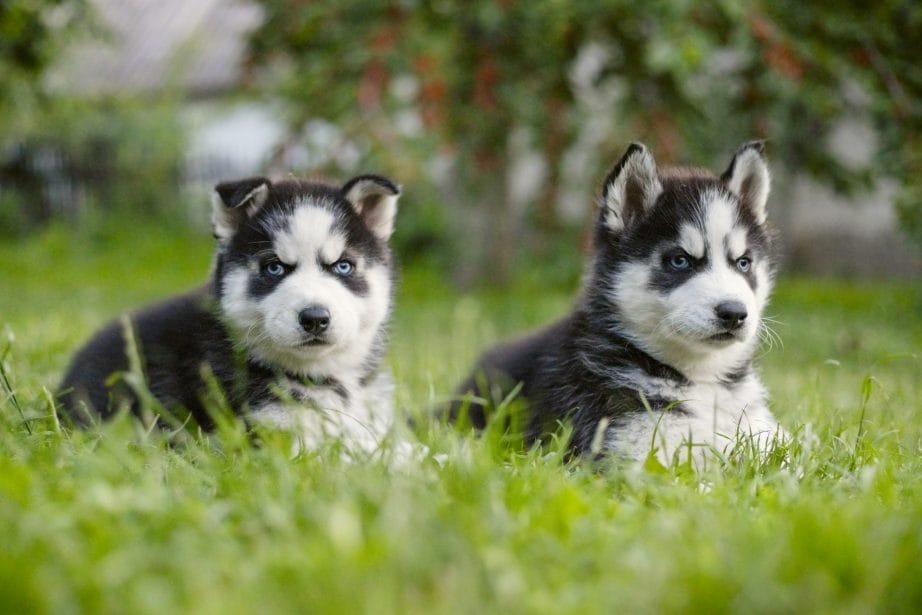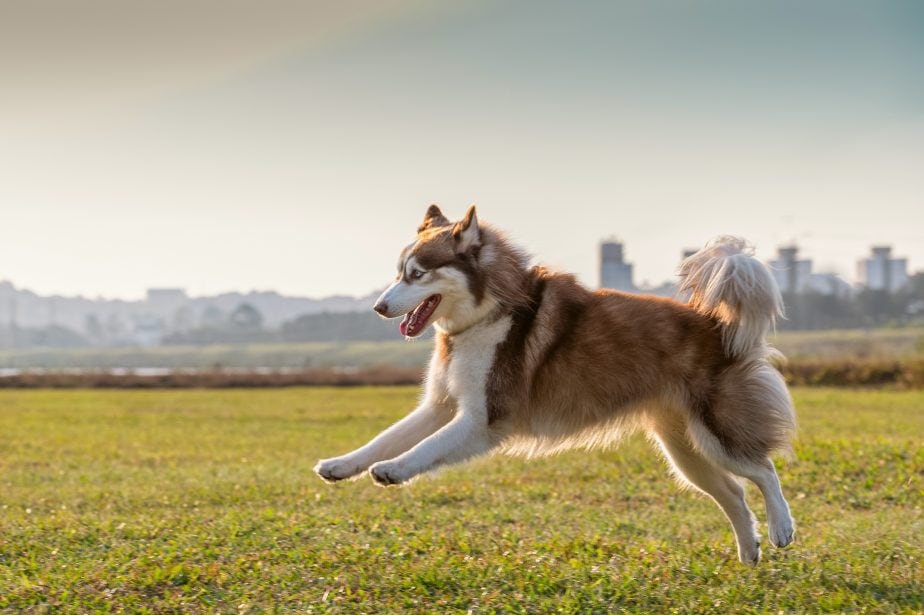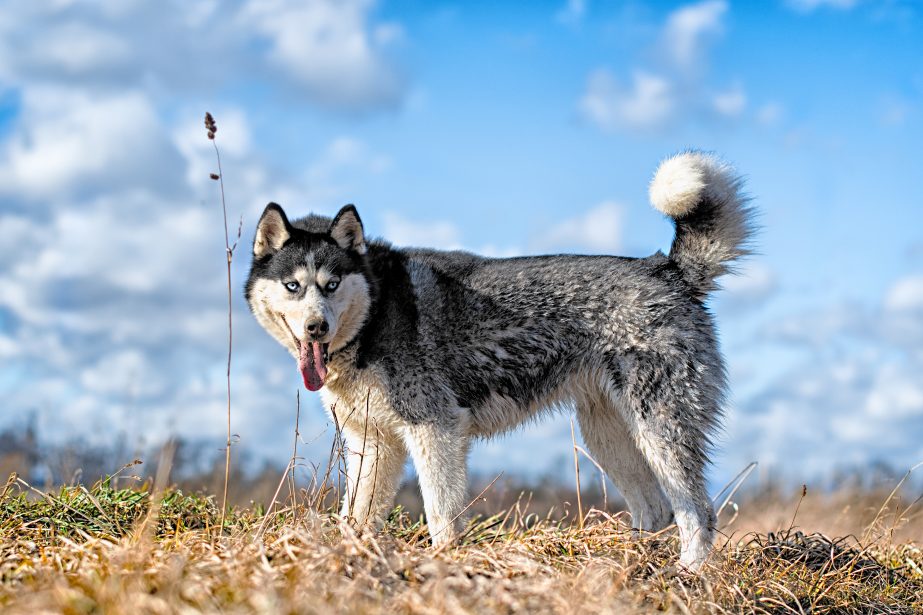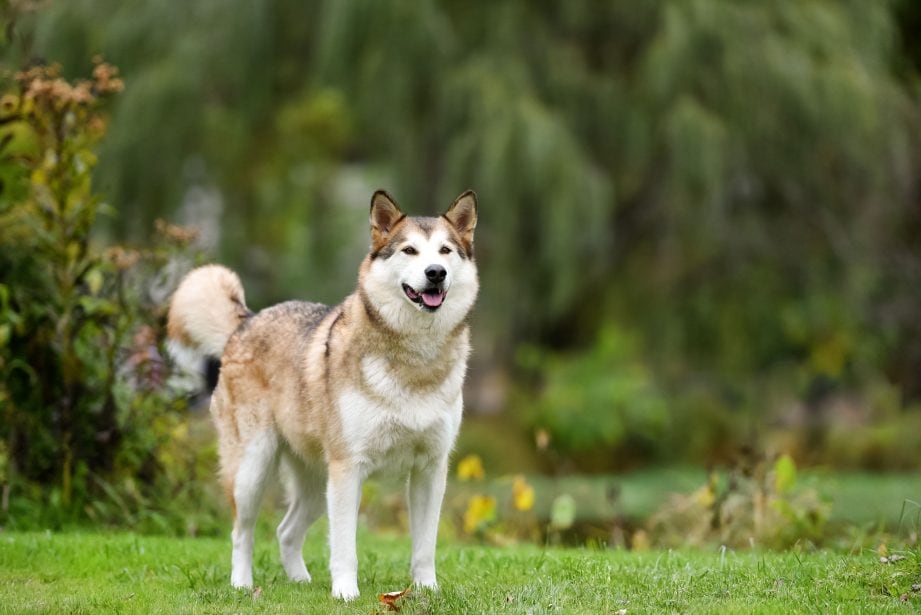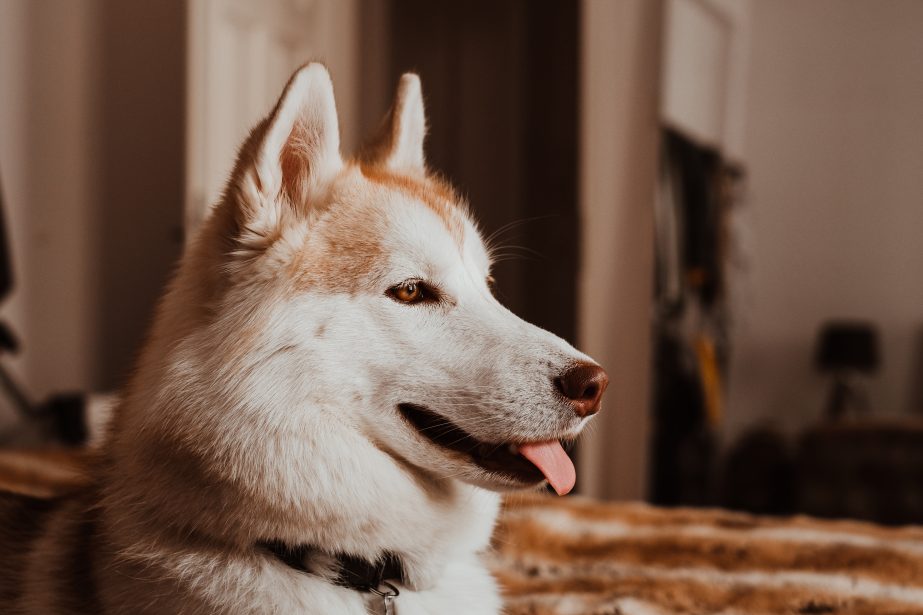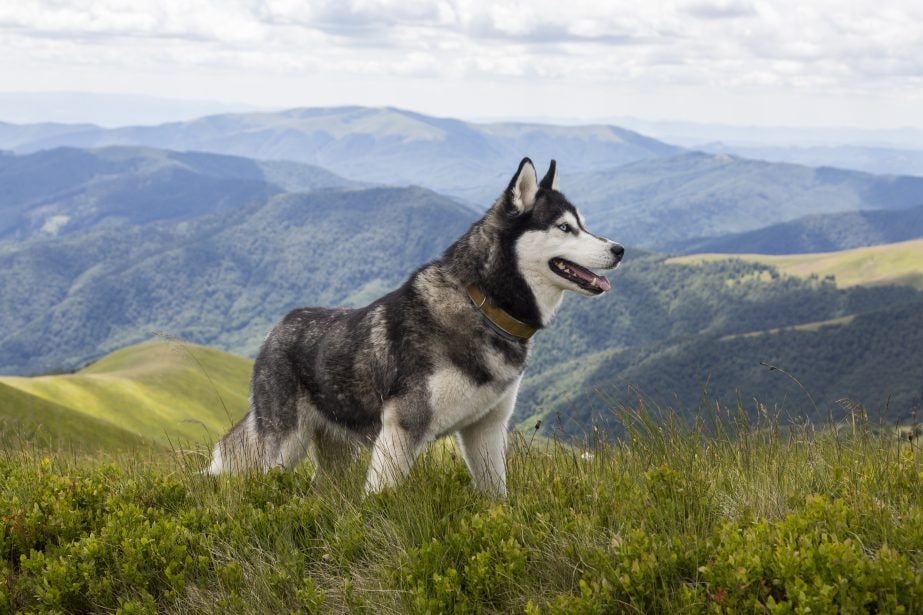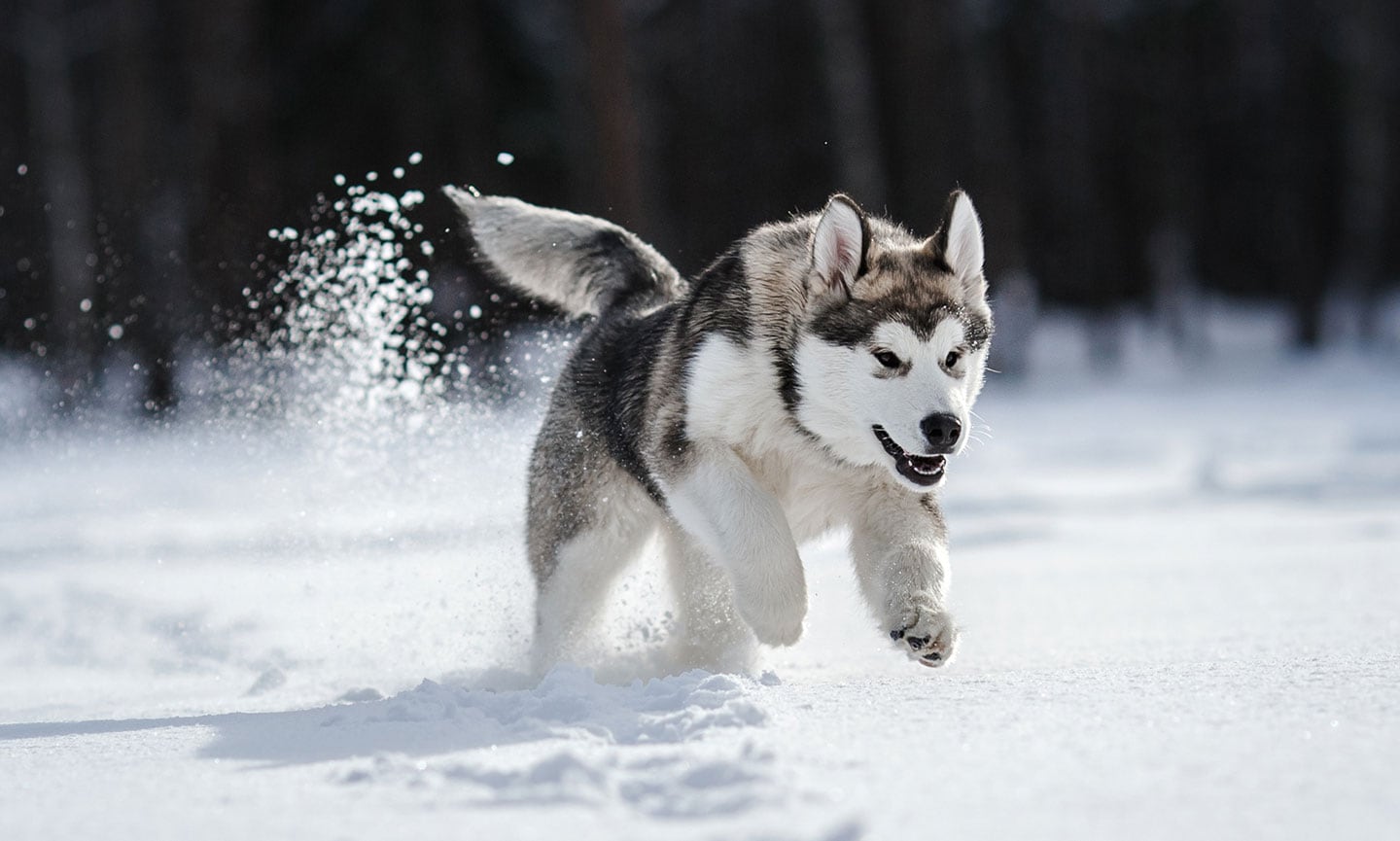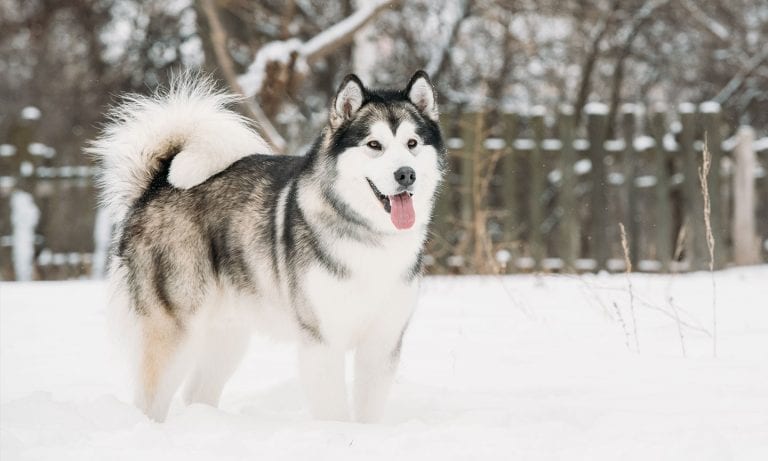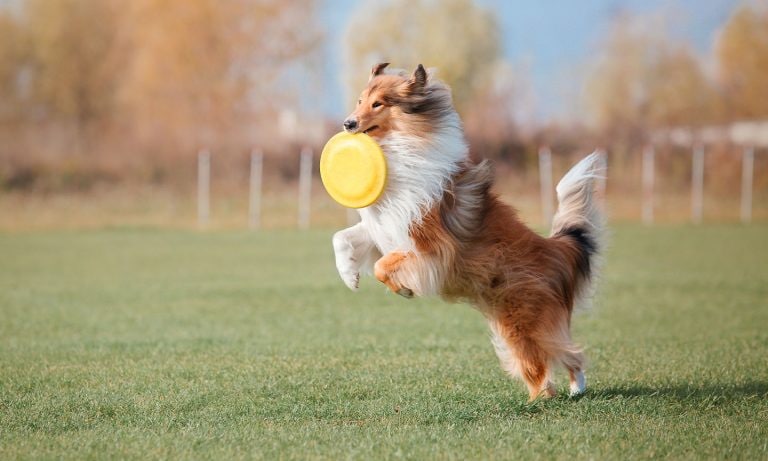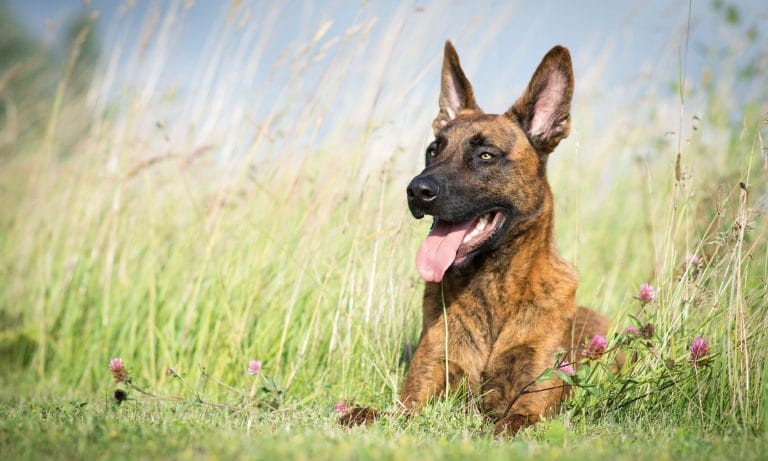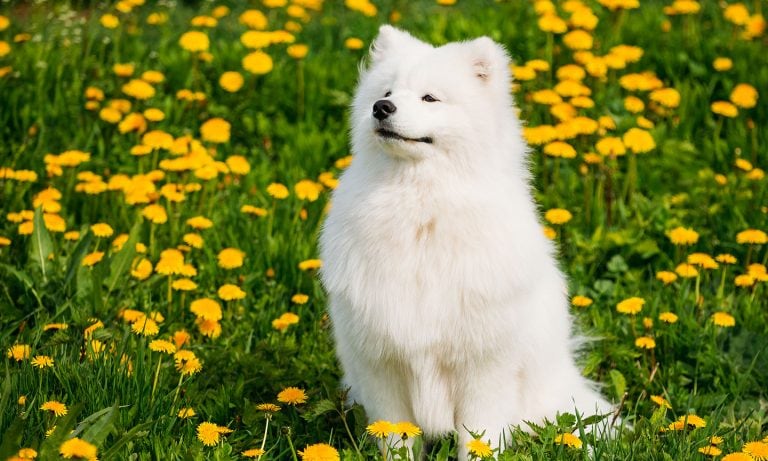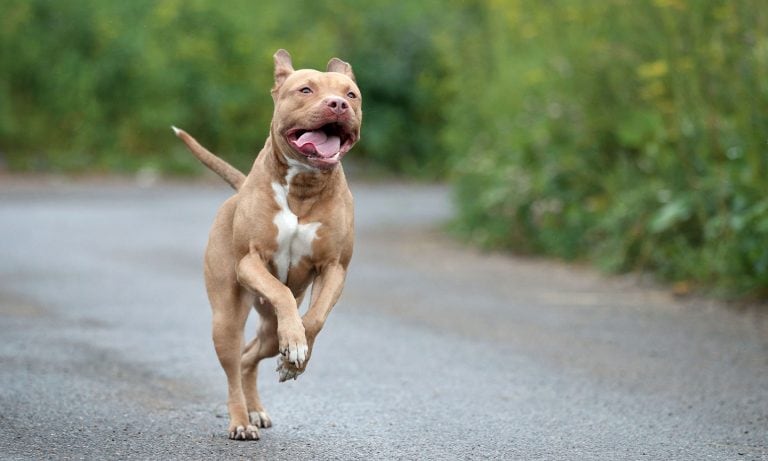Having a Siberian Husky means you need to double-check your locks to make sure they can’t escape. Huskies want to explore the world outside, and they’ll try all sorts of ways to break out of your house or yard. (Make sure your trash can isn’t too close to the fence—it’s a perfect springboard!) You’ll just have to give in to their desires and leave home with them. These super smart dogs love adventure, especially with you. So, lace up those hiking boots and hit the trail.
Breed Snapshot
Temperament:
Escape ArtistsWelcomingHard-WorkingCoat Color:
BlackGrayAgoutiSableRedBrownWhiteTan
Best For
Siberian Huskies are as energetic as they are strikingly beautiful. This independent breed needs firm training, as well as consistent exercise and mental stimulation. If you're looking for a loyal canine partner to join your active adventures, this might just be the breed for you.
Siberian Husky Temperament
Siberian Huskies, renowned for their friendliness and intelligence, are wonderful companions who thrive on social interaction. They have an inherent need to be surrounded by both humans and fellow canines, and express their sociable nature in unique ways: Many will “talk” to you using howls, growls and whimpers, which is an endearing part of their personality.
Their affability comes with two caveats:
- Since they’re predisposed to welcoming strangers, they lack the traits of a typical guard dog. (Not a problem if you don’t need a guard dog!)
- Siberian Huskies don’t enjoy long periods of isolation or contemplation. In such circumstances where they are stressed or bored, they may contemplate, and act on, destructive behaviors. If left in the backyard, Huskies are notorious for their escape attempts. Secure fencing is a must to prevent exploratory escapades.
Huskies are also strong-willed, a trait that may make training a bit of a challenge. They’re typically good around kids and other dogs, but they do have a high prey drive and may chase cats and small animals. However, with an experienced pup parent who can train and socialize them consistently, they can be a well-behaved family member.
How to Care for a Siberian Husky
Parenting a Siberian Husky comes with a time commitment. Because this breed is so strong-willed and has a high energy level, you’ll spend lots of time training and exercising them, and also vacuuming. (Make sure you have a pet-friendly vacuum!) They need frequent brushing and even more brain engagement.
Siberian Husky Health
Siberian Huskies are a generally hearty and healthy breed with a lifespan of 12-14 years. Being mindful of potential health issues can significantly contribute to your pup’s overall well-being and help your pup live the happiest and healthiest life possible. Here are a few conditions the breed is prone to:
- Ocular Issues: Huskies can have a few eye health problems:
- Cataracts: Siberian Huskys are prone to juvenile cataracts which can start as young as 6-18 months of age. They can cause blindness, but often can be treated with surgery.
- Corneal Dystrophy: This is a potentially inherited condition where the cornea is clouded. Often, that cloudiness doesn’t impede vision, and no treatment is needed.
- Progressive Retinal Atrophy (PRA): PRA is a degenerative disease that causes blindness. A genetic screening test is available so be sure to ask your breeder. While there is no treatment for PRA, a dog can adjust to blindness and still live a happy life.
- Von Willebrand Disease (vWD): This is a bleeding disorder caused by a deficiency in the protein needed for blood to clot. Signs don’t always show up until a dog experiences prolonged bleeding (for example, after an injury or surgery). A vet can screen your pup for this disorder. Dogs with this condition are typically normal in everyday life but may need a blood transfusion with routine surgery.
- Hip Dysplasia: Hip dysplasia is due to an often-genetic deformity of the hip socket. Signs include limping, inability or lack of desire to jump, getting up more slowly than usual, and pain. Treatments include weight management, joint supplements, prescription medication or surgery, depending on the severity.
- Autoimmune Skin Disease: This skin disease is called pemphigus foliaceus and is common in Siberian Huskies, beginning at around 4 years old. It may lead to hair loss on the ears, the top of the nose and the footpads. Crusts form on some dogs, and if they scratch it, bacteria can get into the open skin and cause infection. Treatments typically include immunosuppressive medications, steroids and antibiotics to treat active infections.
- Epilepsy: Epilepsy is often an inherited seizure disorder and tends to show up when the Husky is between 6 months and 5 years old. If your Husky is prone to epilepsy, they will probably be prescribed medications to manage their seizures.
- Hypothyroidism: This endocrine disorder occurs when the thyroid gland is not producing enough thyroid hormone. Symptoms include weight gain, hair loss and lethargy. Diagnosis is typically via blood test and treatment is often daily medication.
Siberian Husky History
Siberian Huskies were originally bred as working dogs in the Russian region of Siberia (and are still to this day). These dogs, cultivated by the Chukchi people, indigenous Siberians, provided companionship and worked as sled dogs, hauling loads over miles of tundra in frigid temperatures. They enabled the Chukchi people to expand their hunting and gathering territories.
The Siberian Husky’s significance extended beyond Siberia when folks seeking fortune brought the breed to Alaska to pull sleds during the Gold Rush era of the late 1800s and early 1900s. At this time, they also participated in sled-dog races alongside the Alaskan Malamute and Samoyed.
The Husky’s athletic reputation is perhaps best illustrated by the 1925 “serum run,” a dog sled relay over 600 miles in less than six days to rush a lifesaving serum to Nome, Alaska, which was grappling with a diphtheria epidemic. Global newspapers showed photos of these beautiful, strong dogs, many of which were Siberian Huskies, presenting them as heroes. You might recognize the name of the lead dog: Balto. Balto was the lead dog on the final stages of the journey and is one of the most celebrated dogs of all time. He’s commemorated by a statue in New York City’s Central Park, and immortalized in the movie “Balto”, which is loosely based on the sled dog’s story.
Beyond their legendary feats, during World War II, Siberian Huskies also served in the U.S. Army’s Search and Rescue Unit in the Arctic. As a testament to their enduring appeal and capabilities, in 1930, the American Kennel Club (AKC) recognized Siberian Huskies. The Siberian Husky Club of America was formed shortly after, in 1938. Today, the Siberian Husky is a popular family pet in America.
Looking to add a Husky as a pet? Siberian Husky puppies cost between $700 and $1,200. You can find a reputable breeder on the American Kennel Club or Siberian Husky Club of America websites. If you opt to pay for a purebred pup, be sure you’re getting a puppy who’s been screened for health and temperament issues. You can also contact Siberian Husky rescues to adopt a pup or look for the breed at your local shelter. Check Chewy’s listings of adoptable Huskies in your area.
All new puppy buyers should research the breed: Talk to breeders and people who have experience with Siberians about your dog wants and needs. Know what to expect!
FAQs
Are Huskies hypoallergenic?
Huskies are not hypoallergenic dogs. They shed year-round and copious amounts twice yearly (spring and fall) as they prepare for the changing seasons.
Are Huskies wolves?
Huskies are not wolves, even though many people often confuse these canines for one another due to the Husky’s coloring, shape, and “wolfish” appearance. The two animals share a common ancestor, but Huskies and wolves are distinct species. Some Huskies have the agouti color gene, which allows the dog’s fur to express pigment in patterns of light and dark, giving the pup gray wolf-like coloring.
Are Huskies smart?
Yes, Huskies are clever dogs known for their intelligence. If they don’t think your teaching is up to par, they’ll judge you and stop listening.
Siberian Husky versus Malamute: What’s the difference?
Siberian Huskies and Alaskan Malamutes are two different dog breeds, and both are officially recognized by the AKC. Even though they both originated from cold northern regions and might look similar, they have some important differences. Think of a Siberian Husky as a “thoroughbred” and a Malamute as a “draft” horse (think Clydesdale).
Both breeds are sled dogs, but their purposes are different. The Siberian Husky is good at pulling light loads over long distances at a moderate speed, akin to a thoroughbred racehorse designed for swift endurance. The Alaskan Malamute, meanwhile, is like a big, strong workhorse, bred for strength and stamina. They’re great at hauling heavy freight.
You can also tell them apart by their size: Siberian Huskies are smaller, usually around 45–60 pounds for males and 35–50 pounds for females. Alaskan Malamutes are much bigger, ranging from about 85 pounds for males to 75 pounds for females.
Are there different types of Huskies?
The Siberian Husky shares common ancestry with a variety of other breeds, including the Alaskan Malamute, Canadian Eskimo Dog, Greenland Dog, Samoyed and the Alaskan Husky. However, these are all distinct breeds.
Alaskan Huskies are selectively bred to produce the best working dogs possible. Breeders meticulously plan their breedings, carefully studying pedigrees for desirable sled dog traits. These dogs are highly athletic, designed for speed, endurance, and problem-solving abilities. However, the AKC doesn’t recognize them because they’re a mix of various Northern and non-Northern breeds and don’t have a formal breed standard.
What are popular Siberian Husky names?
Some of the most common names for female Siberians are Luna, Koda, Bella, Nova, Ghost, Nala, Aspen, Blue, Dakota and Maya. Some of the most common names for male Siberians are Geralt, Koda, Loki, Ghost, Zeus, Dakota, Apollo, Sasha, Max and Bear. Get more dog name inspo.
What are the most common Husky mixes?
- Husky-German Shepherd mix (Gerberian Shepsky)
- Husky-American Pit Bull Terrier mix (Pitsky)
- Husky-Corgi mix (Siborgi or Corgsky)
- Husky-Golden Retriever mix (Goberian)
- Husky-Labrador Retriever mix (Labsky)
- Husky-Pomeranian mix (Pomsky)
Note: These are not purebred dogs but mixed breeds.
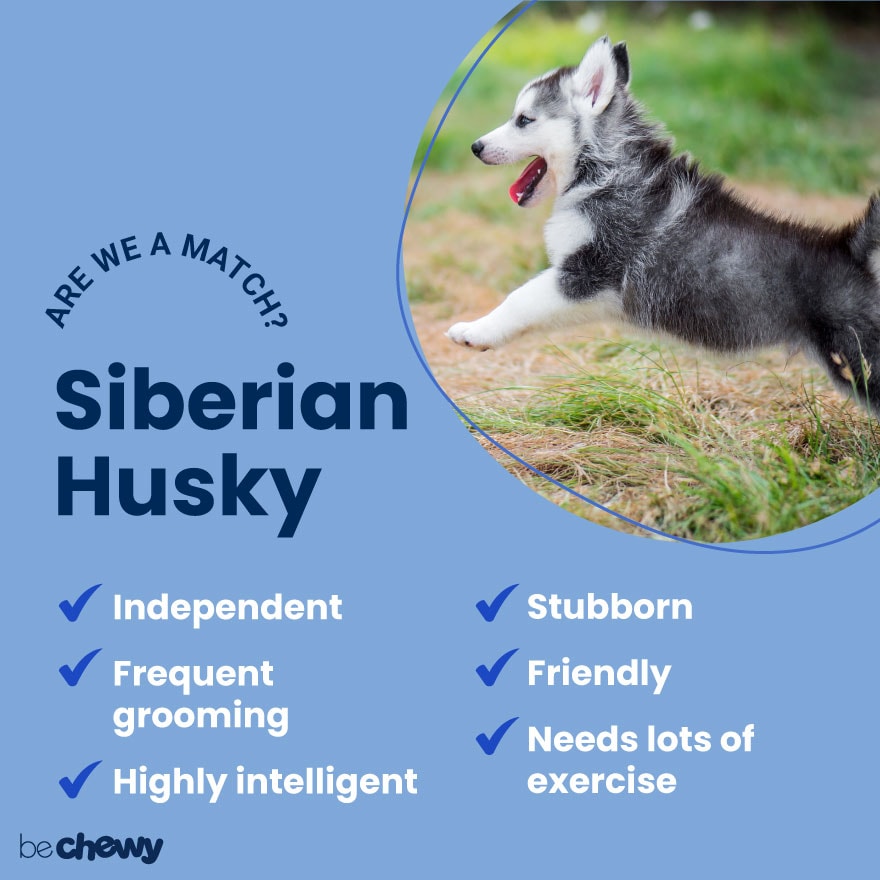
Top Takeaways
Siberian Huskies are friendly, happy dogs who need an experienced pup parent to guide them—bonus points if you have another dog in the home. Huskies love to explore and are quick learners, so they’re always ready for a new adventure. This working dog breed needs a lot of training to become a well-mannered family pet. They need someone who is good with a brush, because you’ll spend a lot of time keeping fly-away hairs at bay.
Expert input provided by veterinarian Dr. Rachel Barrack, DVM, CVA, CVCH of Animal Acupuncture in NYC; head trainer, Sparky Serka and master trainer, Bethany Wilson at The Puppy Academy in Hermosa Beach, Calif.; and Shelley Kacenski, Siberian Husky parent and breeder, and Area Club Coordinator for the Siberian Husky Club of America.
Breed characteristic ratings provided by veterinarian Dr. Sarah J. Wooten, DVM, CVJ, a veterinarian at Sheep Draw Veterinary Hospital in Greeley, Colorado; dog trainer and behavior consultant Irith Bloom, CPDT-KSA, CBCC-KA, CDBC, owner of The Sophisticated Dog, LLC, in Los Angeles; and certified animal behavior consultant Amy Shojai, CABC, in Sherman, Texas.
The health content was medically reviewed by Chewy vets.

Search for Adoptable Siberian Huskys Near You
Share:
